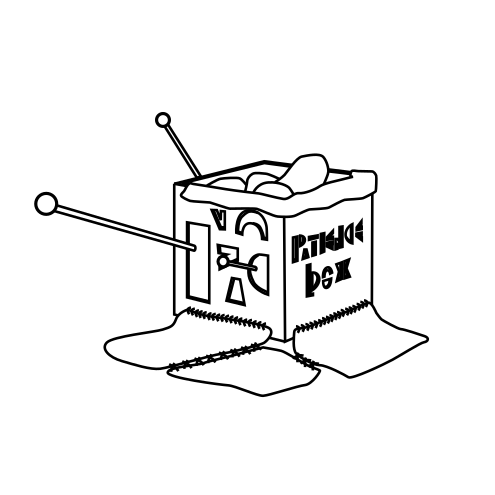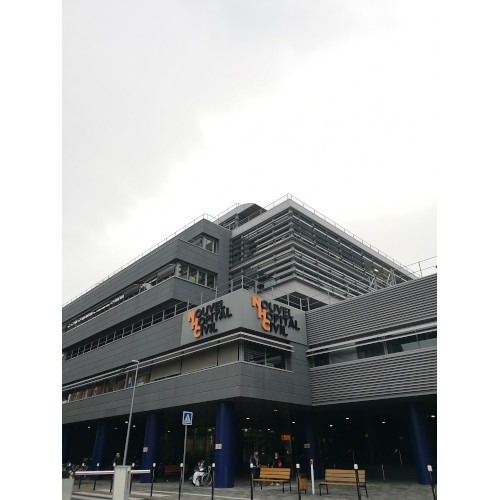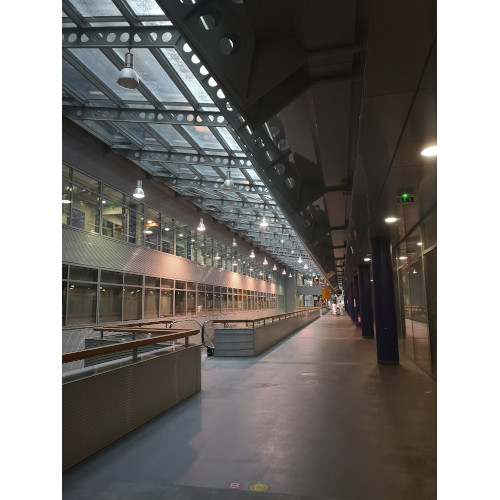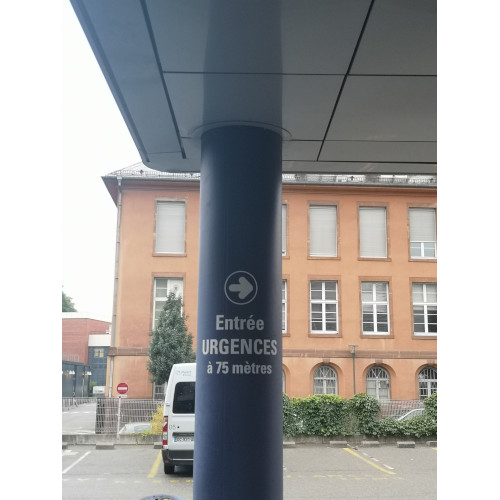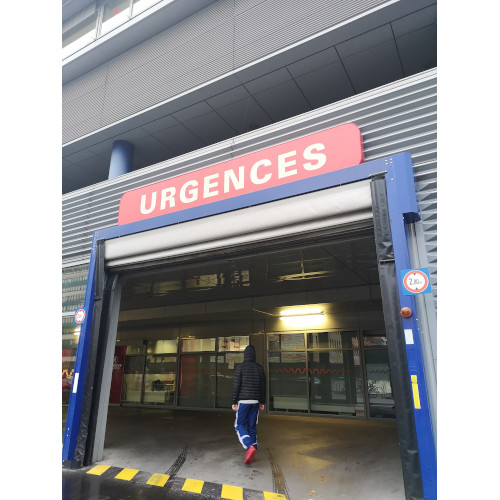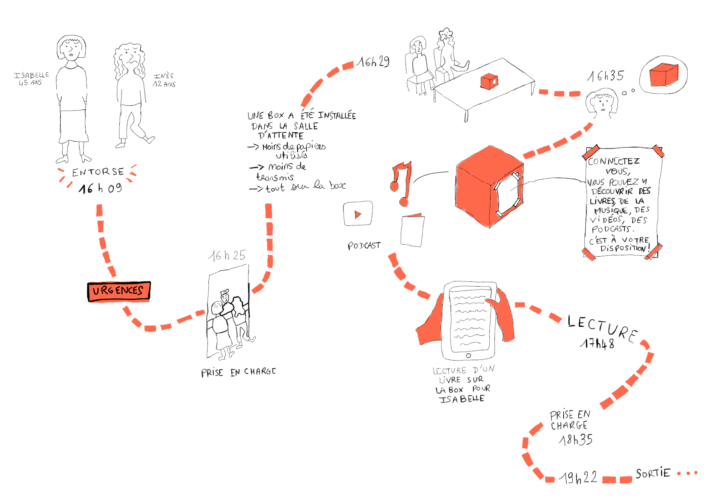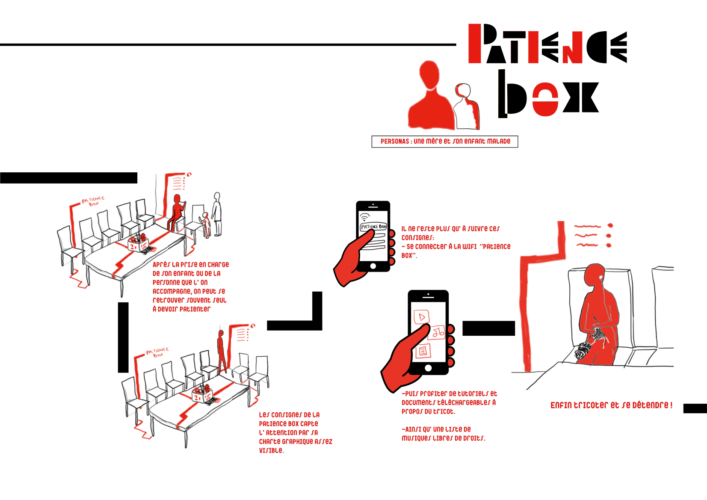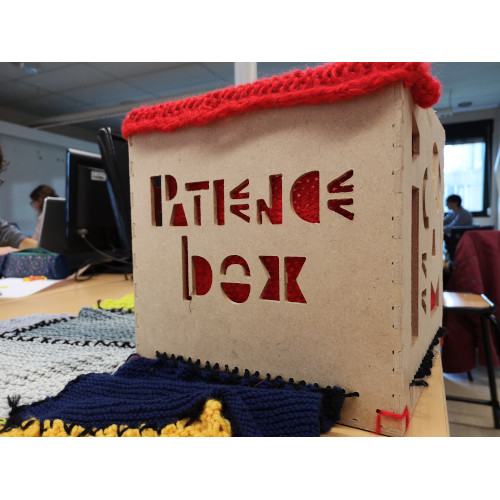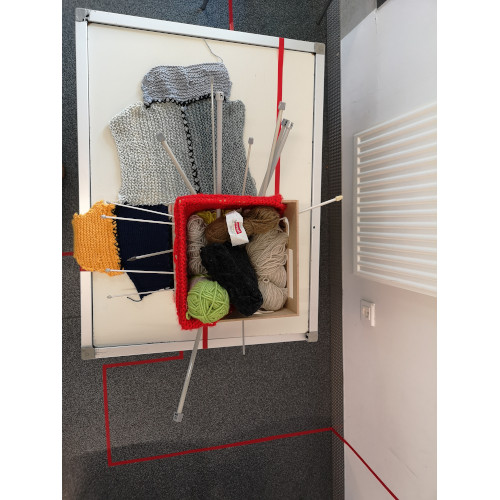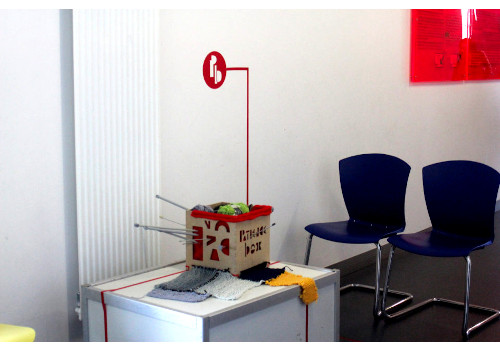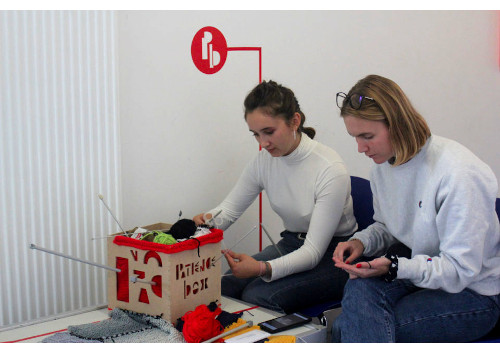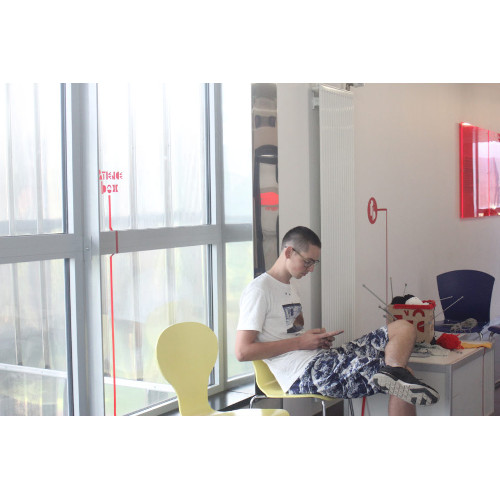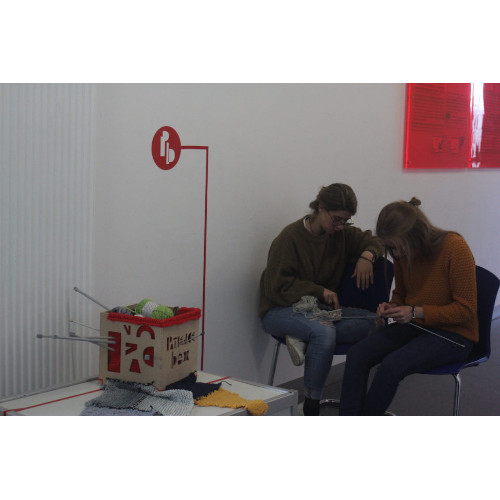Hypothetical project to improve emergency waiting room
Project carried out in 2019 with Salsabil, Maël and Melvin
In 2011 David Darts, a professor at New York University, created the device for the Pirate Box. From a Raspberry Pi and from an information storage space, it generates a local wireless network which is not linked to the Internet. It is possible to connect to it, drop in and recover files. The objective of Darts was to avoid all through the web, between the exploitation of our personal data, filing, advertising and cookies, etc.
The development of the Patience Box
The aim of our project was to take inspiration from this tool and find other uses for it. By developing several scenarios and analyzing their consistency, we found two major ones: exchanging files on a pirate box helps minimize the pollution created by the use of the Internet and target our content for a specific purpose.
The Patience Box is part of this second approach. Starting from a project located in the emergency room, we explored these places and found an anxious ambient environment. We wanted to offer therapeutic content to people forced to wait in emergencies, often subjected to mental or physical suffering. This project centers around knitting, an activity known for its soothing properties.
Field observation
Evolution of the Patience Box scenario
Its content
This device thus offers tutorials to learn how to knit, articles related to the activity, podcasts and royalty-free music.
Communication of the patience box
The communication of the patience box seeks to open the patience box users to the project. This is why we thought of the design of an imposing cubic box, installed in the center of the waiting room table. This must contain the necessary needles and balls of wool. The exterior is wooden, to allow its rigidity and solidity. The interior is knitted wool to evoke softness, warmth and soothing. It has a hanging system: each patient who has finished his knitting can participate in the partcipative work of a large patchwork blanket.
Creation of the box
We created our typography and our logo starting from simple geometric shapes. These modules were reused to perforate the box, reveal its wool lining and create needle holders.

The project’s graphic charter
The information necessary for the project is linked to the scenography of the waiting room: it is glued to the wall by vinyl printing and connected to the box by adhesive tape, reminiscent of a woolen thread.
Project test
This device has not been tested in the emergency room. Our project to be carried out over a period of 6 weeks, the deadlines were too short to develop a partnership with a public authority constrained by medical confidentiality. It was therefore in our school, by transcribing the atmosphere of a waiting room, that we experienced it.
From this test emerged some aspects to improve: the visibility of our written instructions is to be increased and the connection to the network to facilitate, via the possible development of QR code, which we could find for example on our balls of wool.
The in situ test

